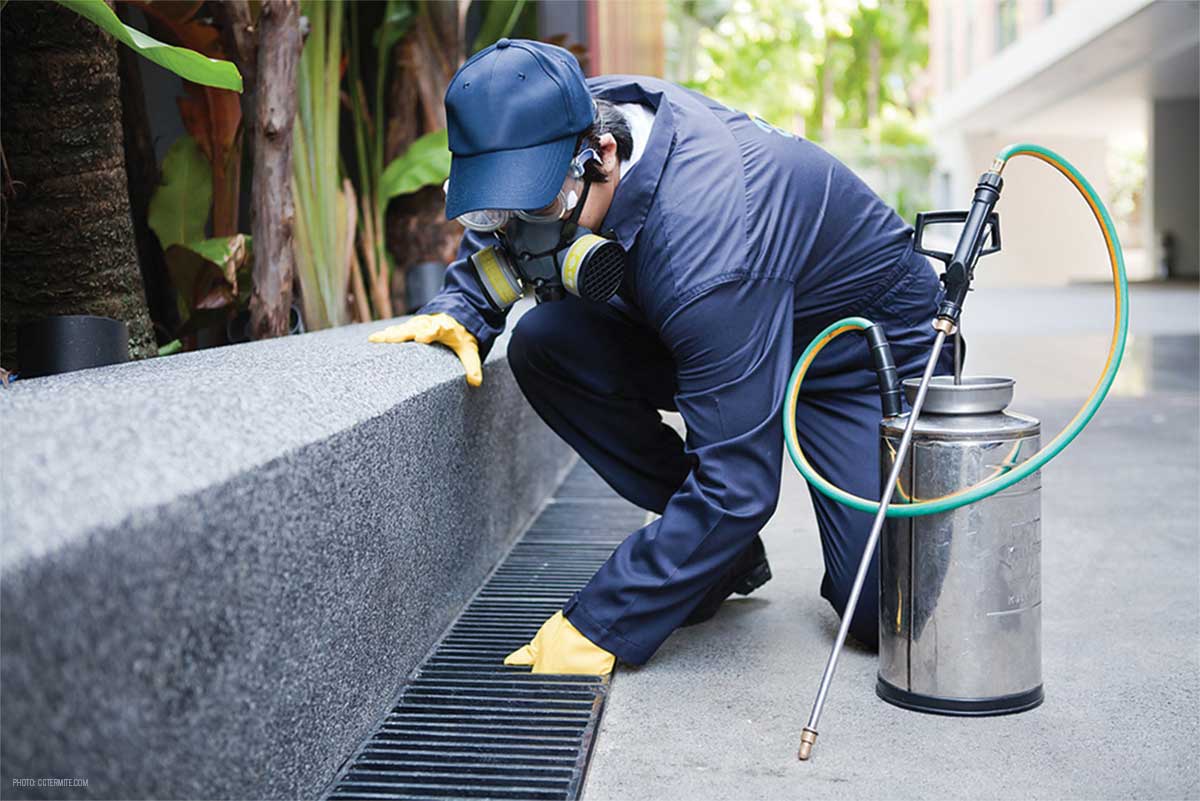Chicago Spider Extermination Services: Safe and Reliable Removal
Wiki Article
A Comprehensive Guide to the Different Kinds Of Bug Control Techniques
With the myriad of parasite control approaches readily available, it can be overwhelming to discover the most efficient service for a details pest problem. In this thorough guide, we will explore these various kinds of pest control methods, providing insights into their applications and benefits. By the end, you will certainly have a clearer understanding of which technique may be the best fit for your pest control demands.Chemical Insect Control Approaches

One typical kind of chemical insect control is pesticides. Insecticides are chemical compounds that are especially formulated to eliminate or drive away bugs. They can be applied in numerous forms, such as sprays, lures, or cleans. Insecticides target specific insects, such as mosquitoes, termites, or ants, and can be made use of both inside and outdoors.
An additional kind of chemical bug control is rodenticides. These are chemical materials created to control populations of rodents, such as rats and computer mice.
Herbicide, likewise called herbicides, are another sort of chemical bug control method. Herbicides are created to precisely eliminate undesirable plants, called weeds, without creating harm to preferable plants. They are generally made use of in agriculture, landscaping, and horticulture to regulate the growth of unwanted plants.
While chemical pest control methods can be very efficient in getting rid of insects, it is essential to use them carefully and follow safety and security standards. Overuse or abuse of chemical pesticides can have negative effect on human wellness and the setting. As a result, it is vital to utilize these methods sensibly and take into consideration alternate pest control strategies whenever possible.
Biological Parasite Control Techniques
Organic insect control approaches involve making use of living microorganisms or all-natural substances to take care of and regulate pest populaces. Unlike chemical techniques, which typically rely upon synthetic chemicals, biological control approaches use the natural enemies of bugs to manage their populations. This strategy is thought about even more environmentally pleasant and lasting, as it minimizes using hazardous chemicals and decreases the risk of pesticide resistance.One widely utilized organic pest control technique is the intro of natural predators or parasites. As an example, ladybugs are presented to control aphids, while particular wasp species are released to target caterpillars. These predators and parasites eat pests, reducing their numbers and stopping invasions.
Another organic control technique is using virus. Specific microorganisms, viruses, and fungi can be utilized to infect and kill particular insects. The bacterium Bacillus thuringiensis is commonly used to regulate caterpillars, as it creates toxic substances that are lethal to these pests.
Organic control techniques can additionally involve the check that use of scents or all-natural compounds that interrupt the breeding patterns of insects. By disrupting their recreation, these techniques help to lower pest populaces gradually.
While biological pest control approaches are generally reliable, they might call for longer periods to achieve wanted outcomes compared to chemical approaches. In addition, cautious consideration must be offered to the choice and launch of natural enemies to avoid unplanned damage to helpful organisms or communities.
Physical Insect Control Methods
To properly handle and regulate pest populations, alternative bug control techniques called physical insect control approaches are employed. These techniques include using physical obstacles, traps, or gadgets to stop parasites from accessing or damaging building. One usual physical bug control approach is the use of displays or internet to maintain pests out of buildings or gardens. These displays are typically constructed from click to find out more fine mesh material that permits for ventilation while avoiding pests from going into. An additional physical pest control technique is the installment of fences or walls to maintain larger parasites, such as deer or rabbits, out of gardens or farming fields. These obstacles literally obstruct the parasites' accessibility to the area, minimizing the potential for damage. Additionally, traps and gadgets can be made use of to record or ward off bugs. As an example, sticky traps can be put in locations where insects are an issue, and the bugs come to be stuck to the adhesive surface. Ultrasonic tools can additionally be made use of to release high-frequency audios that are undesirable to parasites, triggering them to leave the area. Physical parasite control techniques are how to do pest control at home an ecologically pleasant alternative to chemical pesticides, as they do not rely upon the usage of dangerous chemicals.Natural Bug Control Methods
Natural bug control methods supply a sustainable and environmentally friendly technique to managing and removing insects. One of the most typical natural pest control approaches is organic control. By taking on these all-natural bug control approaches, individuals and communities can successfully take care of pests while minimizing the unfavorable effects on the setting and human health and wellness.Integrated Insect Management (IPM)
Integrated Pest Monitoring (IPM) is a detailed and methodical technique to pest control that combines numerous approaches and strategies to properly manage insects while minimizing the use of chemical pesticides. IPM intends to keep pest populations listed below the economic injury level by using a combination of cultural, biological, and chemical control approaches.
Cultural control techniques include changing the setting to make it much less desirable for parasites. This can consist of practices such as crop turning, correct hygiene, and making use of resistant plant ranges. By producing undesirable conditions for parasites, social control approaches can considerably decrease pest populations.

Chemical control methods are used as a last hope in IPM. They include the targeted and cautious use of pesticides to manage bug populations. Unlike standard insect control approaches, IPM aims to decrease making use of chemical pesticides by utilizing different techniques.
Integrated Bug Management (IPM) is a positive strategy that concentrates on long-lasting parasite monitoring instead of relying entirely on responsive procedures. By incorporating multiple control methods, IPM offers a much more sustainable and eco friendly approach to pest control.
Conclusion
In final thought, this post has provided a detailed introduction of the different sorts of insect control techniques. It reviewed chemical, organic, physical, and all-natural parasite control approaches, along with the incorporated insect management method. By comprehending these various methods, people can make informed decisions on which bug control technique is most suitable for their specific needs and choices. Reliable bug control is essential in maintaining a healthy and pest-free environment.Report this wiki page